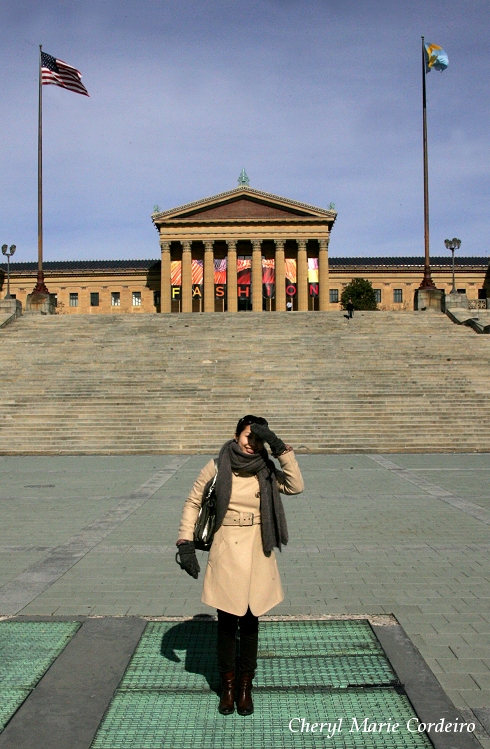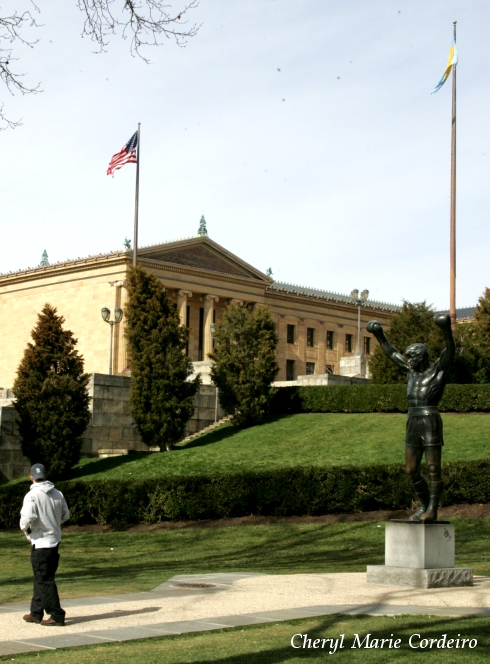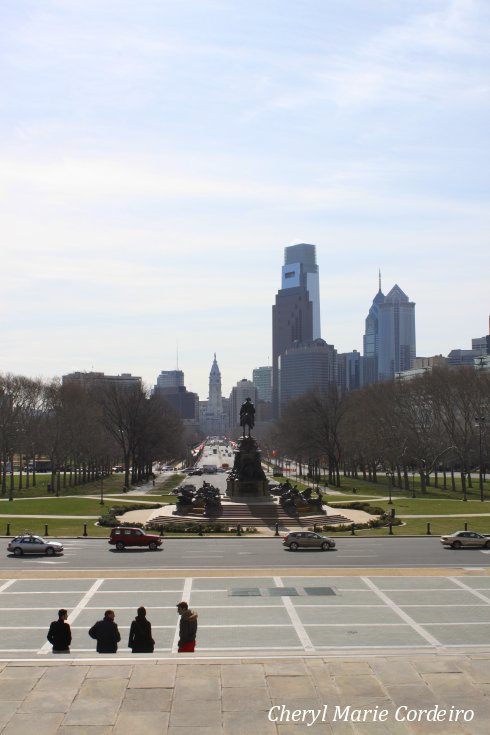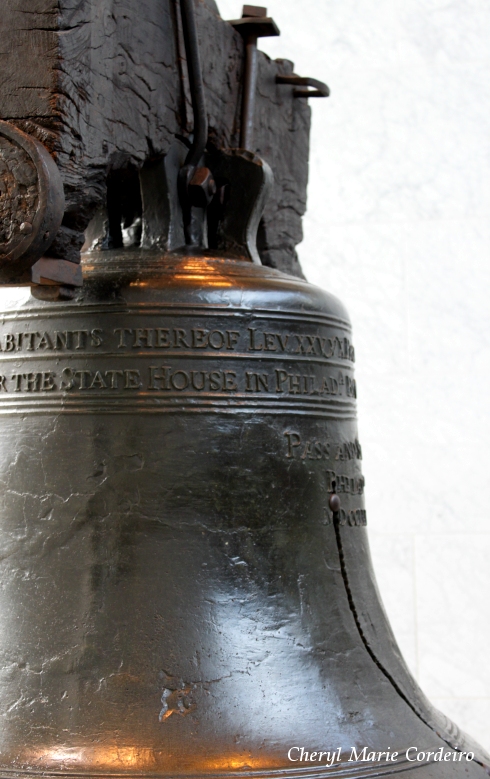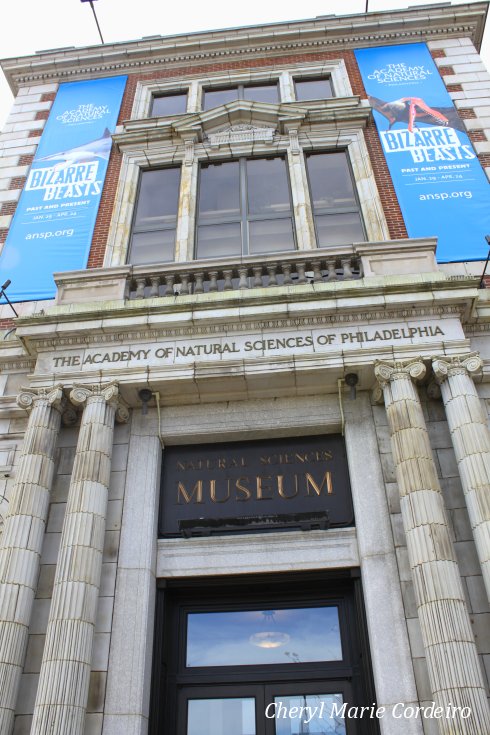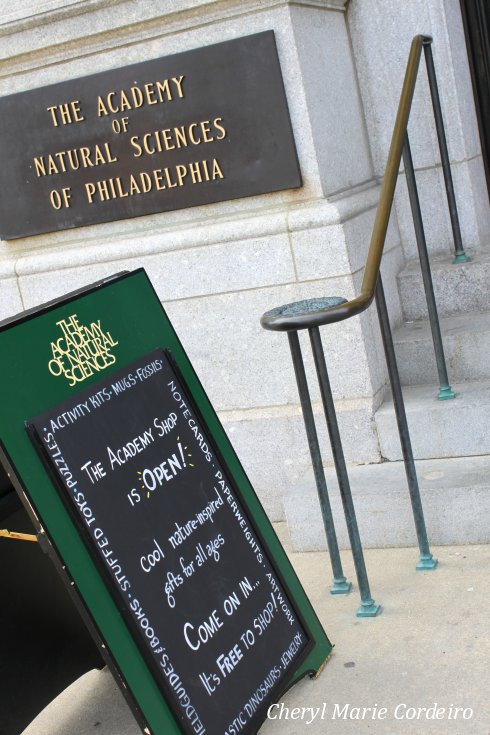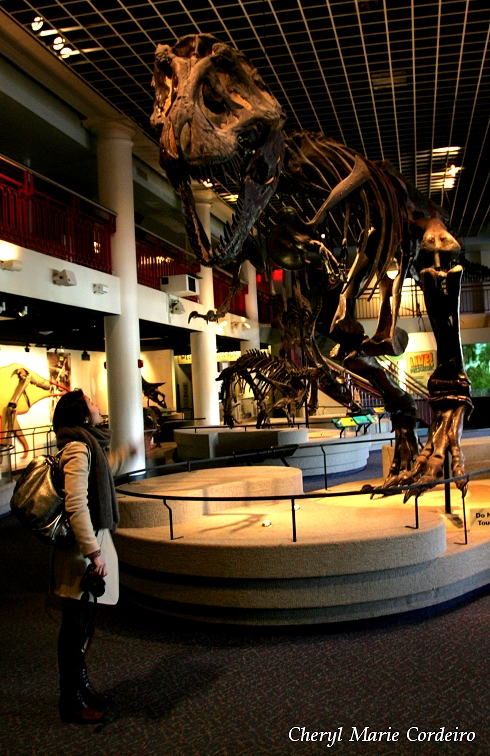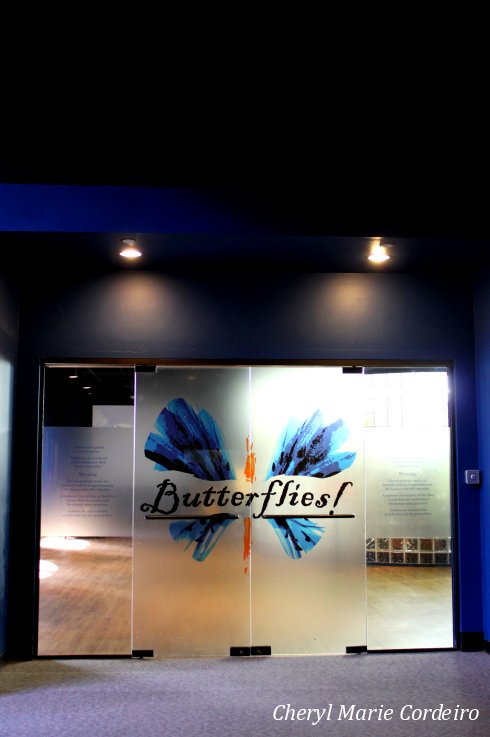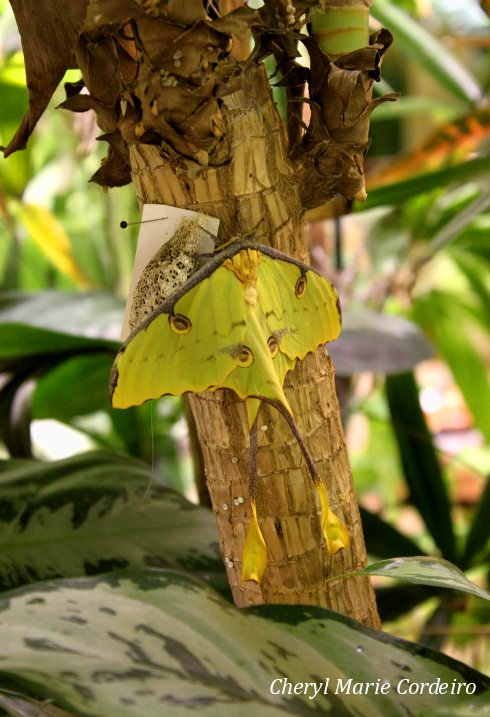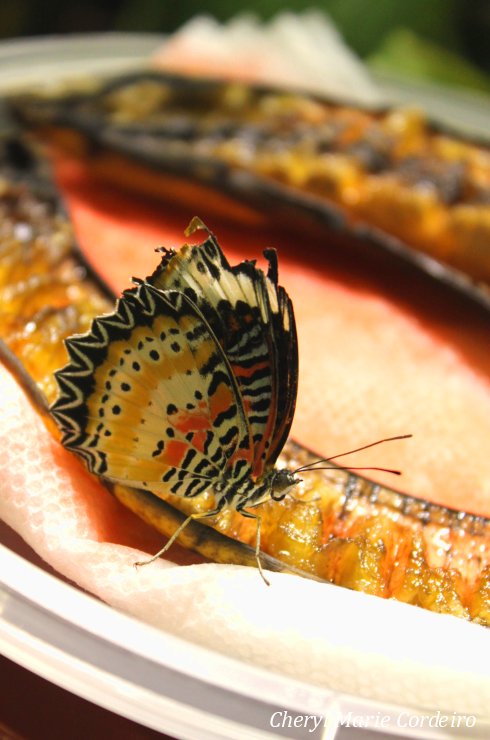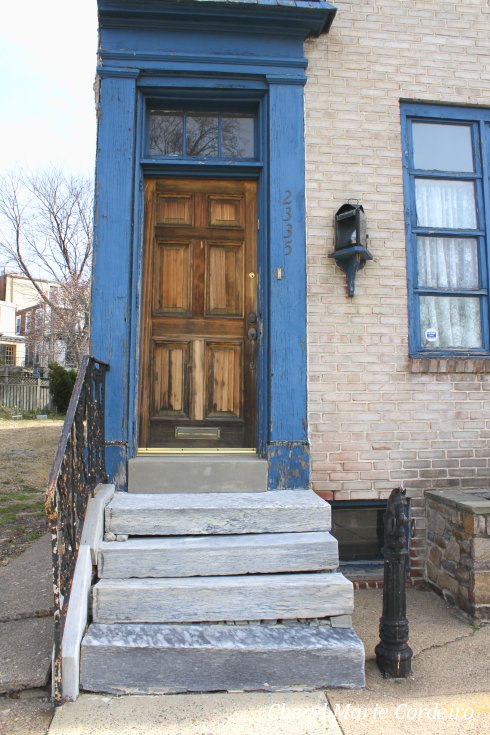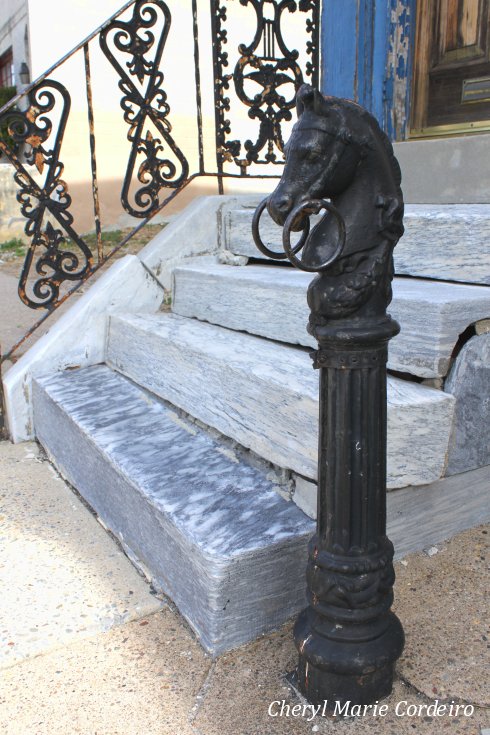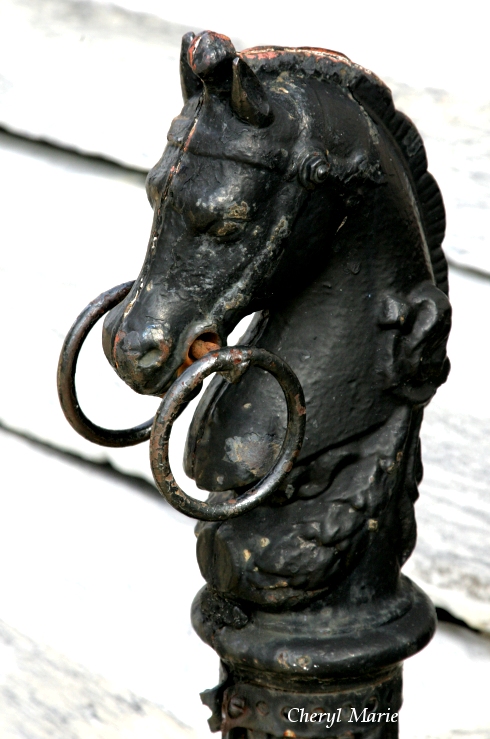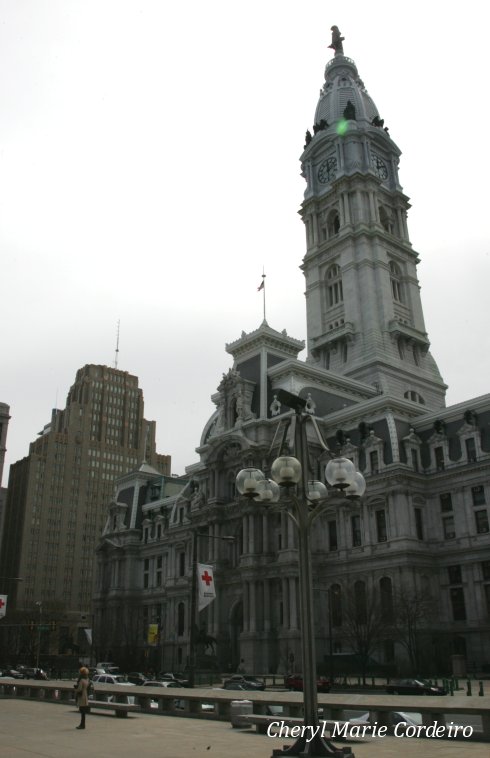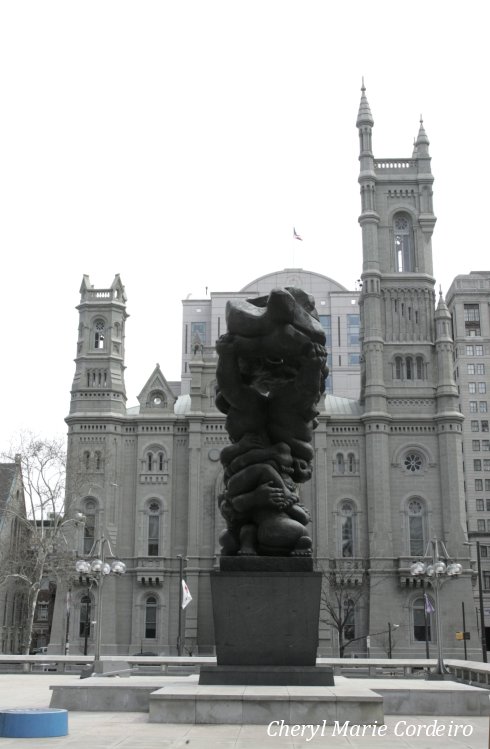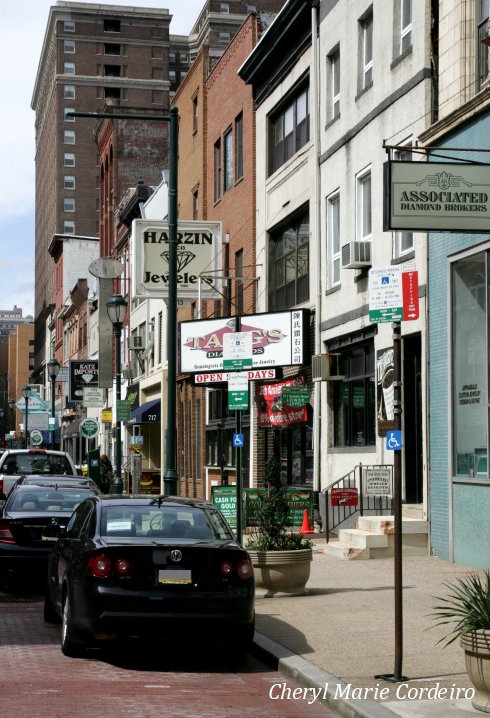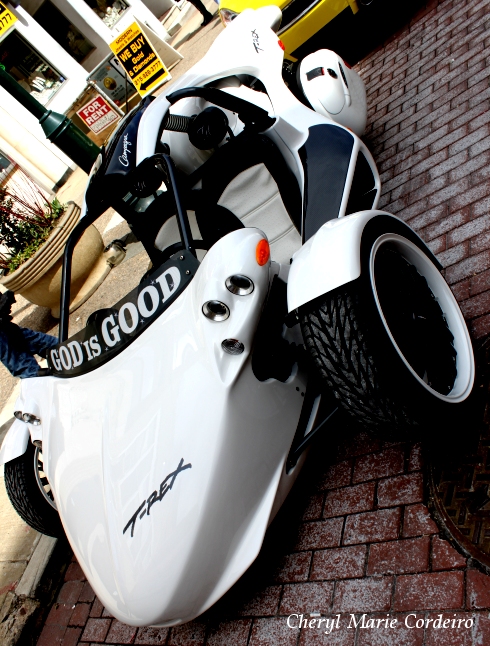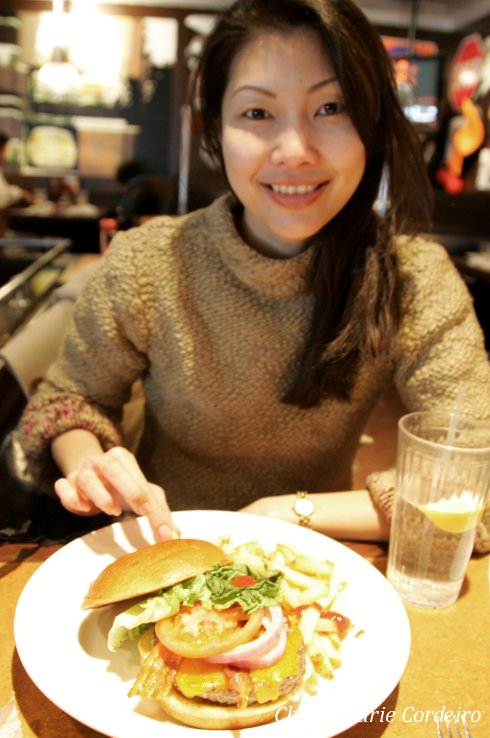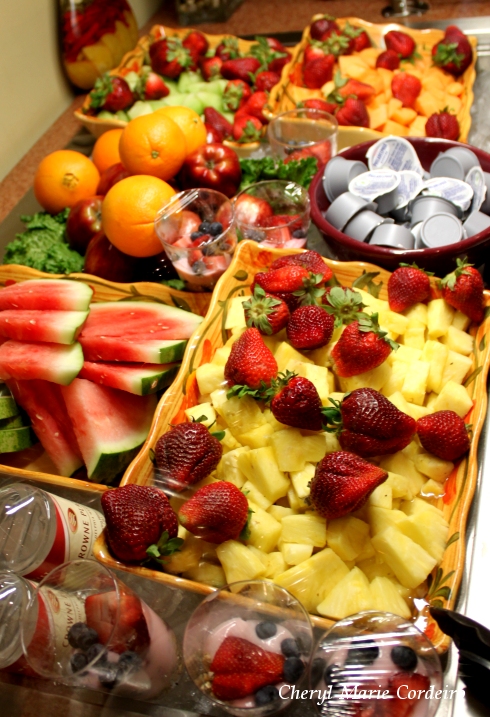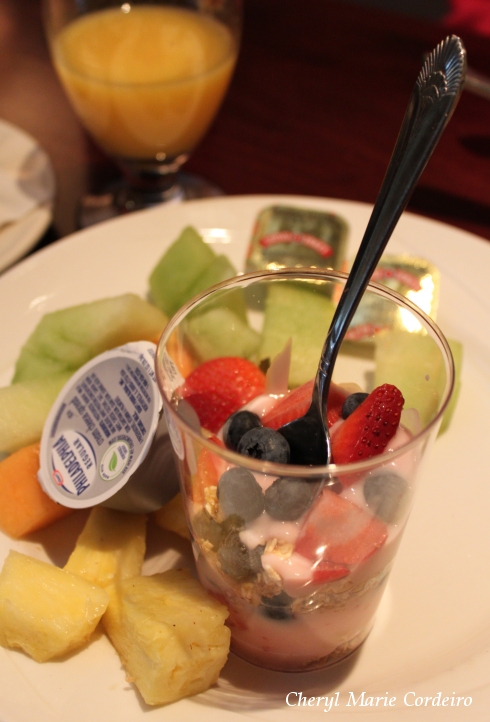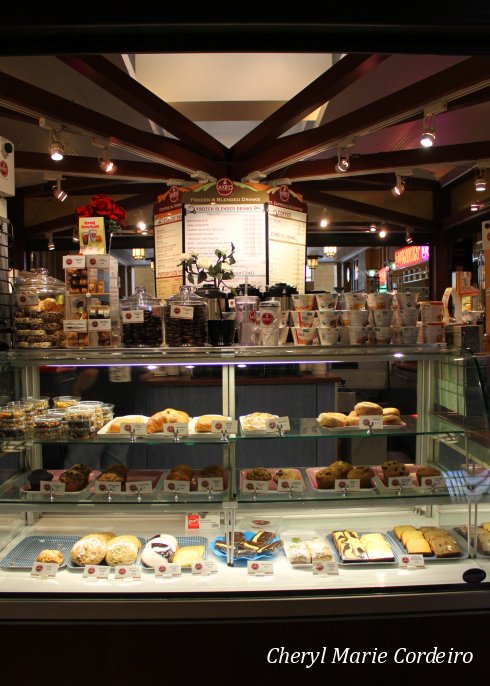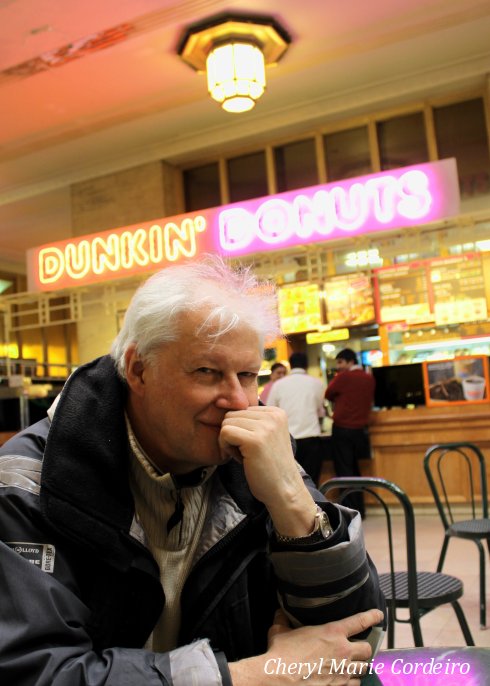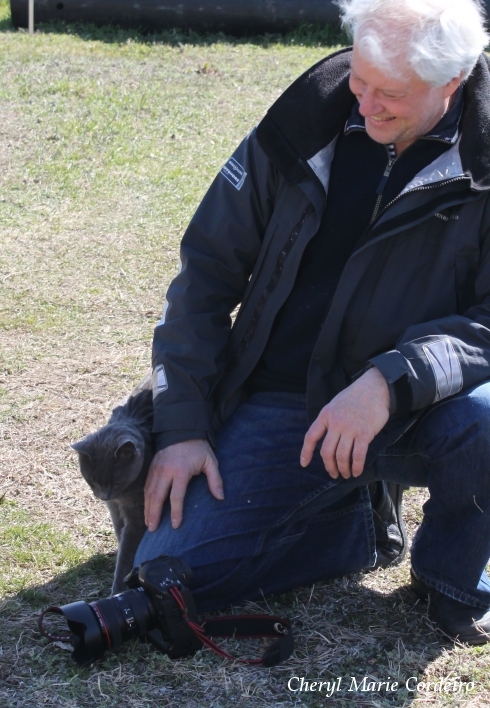The Philadelphia Museum of Art at Fairmount
The Philadelphia Museum of Art is one of the largest museums in the USA. Still, when asking for directions in Philadelphia people might not immediately recognize what the huge building at the small hill near the river is, but if you ask about the “Rocky” stairs … aha!
An ongoing exhibition here that is not to be missed is on Italian fashion designer Roberto Capucci: Art into Fashion that goes on until June 2011.
Photo: J E Nilsson and C M Cordeiro-Nilsson © 2011
Far from being a cliché, running up and down the “Rocky Stairs” is exactly what people do up until today in Philadelphia. That, and posing in front of the Rocky statue for pictures.
In a nod to the movie character, just outside the Philadelphia Museum of Art stands a statue of ‘Rocky Balboa’, by Thomas Schomberg.
Looking down Benjamin Franklin Parkway, from the art museum.
The view from the Museum of Art, past Eakins Oval, and down the Benjamin Franklin Parkway was just gorgeous under the spring sunlight! What must be the most beautiful street in Philadelphia cuts through the entire museum district, straight down to City Hall. Today it was decorated by flags of various countries, including that of Singapore and Sweden.
Being tourists!
With a hectic work schedule, the fact that we had the chance to explore a little bit of Philadelphia was completely exciting!
Taking a look a the the Liberty Bell is a must. A bronze casting disaster turned into the most important national symbol of what USA is all about.
Including, meeting with Rodin’s Thinker, outside of the Rodin Museum.
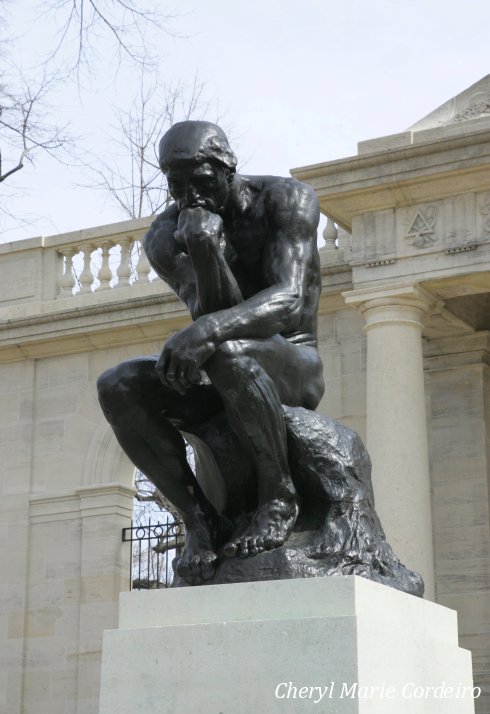
Straight out in the open along Benjamin Franklin Parkway, sits ‘The Thinker’ by Rodin.
The Academy of Natural Sciences
The Academy of Natural Sciences in Philadelphia is the oldest natural history museum in the USA, with world leading research in biodiversity and environment. From January to April of 2011, the academy hosts the “Bizarre Beasts, Past and Present” exhibition that is children friendly, taking visitors on an exploration of the evolution of some of earth’s strangest creatures. To enter this museum was like stepping straight into the 2006 Ben Stiller movie Night at the Museum. They must have based that movie on this museum even if they situate it in New York.
Friendly sign at the entrance to the museum.
Dinosaur Hall
I thought the museum generally child friendly, with their Dinosaur Hall containing a section called The Big Dig that encouraged both children and adults to uncover some replica fossils.
The museum of Natural Sciences comes with a real Tyrannosaurus Rex in the foyer in the spitting image of the Night at the Museum movie.
Butterflies!
Butterflies! is another permanent exhibit at this museum, inviting visitors into a high humidity hall that houses between 60 to 150 butterflies at a time, from 20 to 40 different species on any given day.
High humidity in a lush tropical setting – this small hall is a warm sanctuary for some of the world’s most brilliant tropical butterflies!
Since adult butterflies live about one to two weeks, we were told that the museum received new butterflies from around the world on a weekly basis. As we were shown the incubating cocoons, the question of having them mate and reproduce in the museum’s tropical hall itself was out of the question since most of the butterfly species were not native to the USA and had thus to be restricted in reproduction.
On the upside, receiving butterflies from around the world is a little bit like opening a Christmas present each week, where the butterfly exhibit is able to present visitors with new butterflies every week!
The beautiful Luna Moth is native to North America, Mexico and Canada.
Our first encounter in the butterfly hall was in fact, a moth. Sitting quiet and quite disguised against a plant stem, the light green-yellow Actias Luna, commonly known as the Luna Moth is quite a large moth, having a wing span of up to four and a half inches. Alas, it only lives up to seven days and depending on region and climate, these moths produce either one or at most two generations per year (three generations would be remarkable and it could occur in southern United States). Being in Philadelphia and of course, the climate of the Butterfly hall, we were lucky to encounter this moth on our visit, meeting with perhaps the first generation, making its appearance in early April and May.
Encountering a Malay Lacewing, Cethosia cyane, Nymphalidae that comes from tropical Malaysia. What fascinates about this butterfly is the pattern of ‘choir singers’ on its wing.
Rustic Houses
Streets that run parallel to the Benjamin Franklin Parkway are also culturally scenic in that they contained some of the most rustic houses I’ve seen in the city.
On a forgotten corner of Pennsylvannia Avenue, a small apparently private doorway is still there, featuring a cast iron binding pole for your horse.
Drawn by the blue door, tarnished ornate rails and a cast iron horse binding pole that framed some uneven steps that led up to the door, I couldn’t help but want to capture the moment in my camera.
Agrestic. Beautiful.
The cast iron pole with a horse’s head with rings attached was a throw back in time. In a not too distant past and a slightly different surrounding, this pole would be a convenient place to tie the reins of your horse and have the horse wait for you, as natural as a modern parking meter if you were to park your car along that same road today . A serendipitous find.
Details.
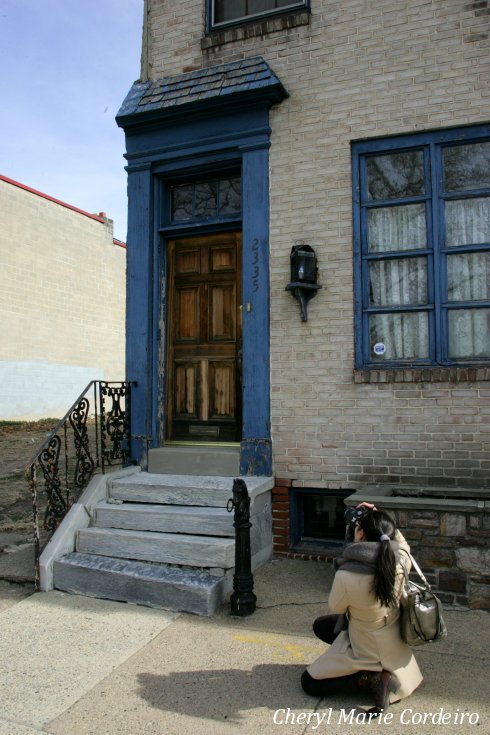
Getting a close-shot of cast iron horse binding pole, with the Celine distressed antique gold leather bag slung over my shoulder doubling as a camera bag.
City Hall
Approaching City Hall and the Masonic Temple was an awesome sight! One could see how its architects John McArthur Jr. and Thomas Walter featured Napoleon III style elements in their 700 rooms building, reminescent of the Élysée Palace in Paris, but with more of everything. There were for example, what I thought were almost too many columns for their purpose, stacked at the entrance of the building and very heavily framed and decorated windows that dimmed its facade.
In front of City Hall, that was built in Second Empire style.
Still, it was a piece of history and I thought it beautiful, sitting across the Masonic Tempel. Constructed only 28 years apart, the two buildings when compared, looked as if they had inherited almost completely different architectural backgrounds.
This sculpture by Jacques Lipchitz, 1976, was the only anomaly of the landscape. Entitled “Government of the People” and even with all its good intentions, I wondered how come that such a sculpture, that looked like a pile of turd, would sit in between Philadelphia’s two most historic buildings, marring the entire historic landscape?
The sculpture, Government of the People by Jacques Lipchitz, 1976 portrays a group of people, kneeling and crushed. Reading the inscription of the sculpture, the piece of art is meant to symbolize “family life, the wellspring of society, the hope of the future and the concept of government being of, by, and for the people”. It is dedicated to people of Philadelphia and it sits in front of the Municipal Services Building. (See Max Buten’s picture of this piece, where apparently, I was not the only one who thought the sculpture looked anything but… “To Frank Rizzo (previous photo) it looked like “a pile of shit”)
I must have stood there for more than half an hour contemplating the logic behind this sculpture – and therein I suppose lies its artistic value? – and concluded that there was so much irony and humour in its metadata, its context, that I could see how this is another example of one of Philadelphia’s artworks that spurred debates, just like The Button at Penn, and the Love Sculptures around the city. It’s Philadelphia speaking!
Jewelers’ Row
Jewelers’ Row was a must-see for me, not only for my love of jewellery but that it had a whole lot of retailers, more than 300 of them, located in the Center City section of Philadelphia along Sansom Street, just off Philly’s main shopping street, Walnut Street. It is also the oldest and second largest diamond district in the USA, the largest district being in NYC.
This row of jewellery shops had everything pretty to rest your eyes on…
In fact, it was on this street that I met an Italian family-owned jewellery store owner who told that he was the third generation in his family to take over the jewellery crafting business in Philadelphia. His grandfather had arrived at Philadelphia from Palermo, Sicily.
…including this very cool car, casually parked outside one of the stores!
Philly Cheese Steak
Philadelphia is renowned for its cheese steaks, with several websites dedicated to ranking the best cheese steaks in town (see Best Cheese Steaks and Cheese Steak Town). There are several places that are even on the tourist maps for you to make your way there, if you’re visitng Philadelphia, Geno’s Steaks, Jim’s Steaks and Pat’s King of Steaks. Geno’s and Pat’s are are open 24 hours, so there isn’t actually an excuse not to try a Philly Cheese Steak when you’re there!
Ironically, this was not a cheese steak meal.
Apart from the cheese steaks, I’m generally a fan of American burgers and sandwiches, where I find myself constantly in love with a different burger or sandwich at every meal when in the USA. One of my favourite restaurants is still Michael Jordan’s The Steak House N.Y.C. at the Grand Central Station, just a stone’s throw from The Roosevelt, with their 12oz burgers, grilled to your preference! Philadelphia, with their burgers and steaks meant dining was overall an enjoyable experience, including breakfasts!
A sample of the breakfast menu.
Topped off with little tubs of Philadelphia cream cheese.
Being curious about the food culture in Philly, I managed to ask some people living in Philadelphia, what they had for breakfast, wherein I was told that yoghurt and cereal on the run was pretty much what the younger generation would grab for breakfast, warm oatmeal being a ‘good breakfast’. The older generation though, would gladly settle down for a fuller warm breakfast of scrambled eggs, grilled sausages and waffles topped with cream or jam.
Philadelphia is much like New York in having an Eat-on-the-Go culture. You can pretty much find your cup of coffee or any of your favourite foods just around the corner from somewhere.
In a food hall, much like the food courts found in Singapore, at 30th Street Station. This food hall is filled with a variety of different types of foods. Here, you can grab most of your daily fixes, from that cup of Italian coffee to dunked doughnuts.
The friendliness of everybody we met
In a day of a Cat – greet strangers – check!
The Kalmar Nyckel at Wilmington, Delaware
Just about an hour’s drive from Philadelphia is the Kalmar Nyckel (Key of Kalmar) replica ship that you might find interesting to visit. The original ship apparently carried Swedish settlers to North America in 1638 to establish the colony of New Sweden. This replica of the ship was launched at Wilmington, Delaware, in 1997.
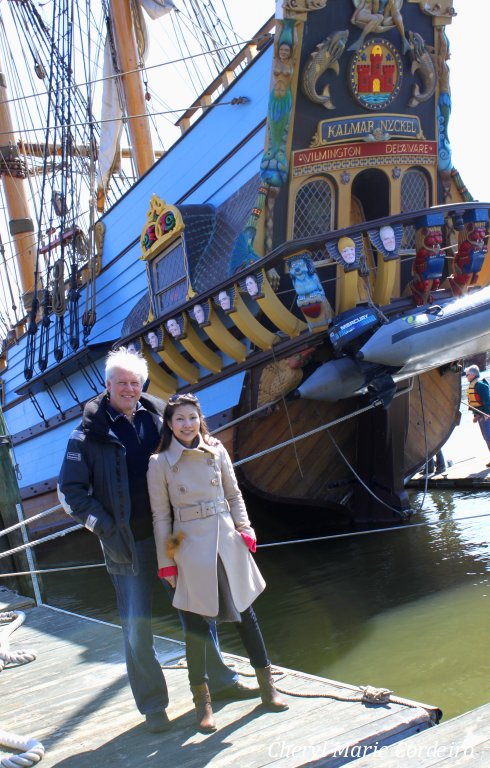
And just south of Philadelphia, in Wilmington, Delaware, there is a fully sailing replica of the Swedish immigrant ship Kalmar Nyckel that in the mid 17th century brought over a colony of daring Swedes who tried to set up a colony here.
The ship is currently funded by the US Gouvernment, the State of Delaware and by donations from organizations and private individuals but as with all deeply heartfelt projects such as this, it would get nowhere without thousands of hours of volunteered work with reparation to keep everything going. The replica of the Kalmar Nyckel is smaller than the Gotheborg III and a close older relative in its design.
The Kalmar Nyckel offers crew training every year and is run mostly by volunteers with a passion for history and sailing. A must see, for anyone with a love for sailing and the salty sea.
—
Photo archive at Flickr! Cheryl Marie Cordeiro
